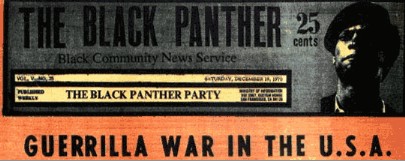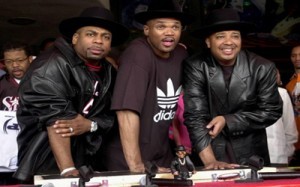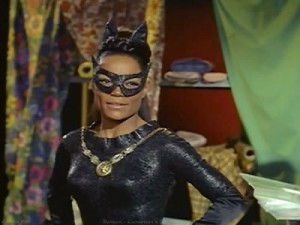Fifteen days ago, October 15th, marked the 48th anniversary of the Black Panther Party (BPP). This is the second installment of my reflections on the revolutionary black nationalist and socialist organization. The BPP was able to flourish in urban cities like Baltimore, Los Angeles, Philadelphia, Cleveland, Indianapolis and Winston-Salem.
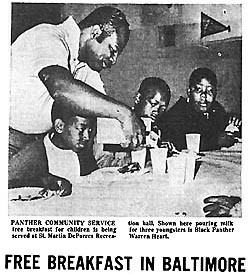 It became an organization committed to a program of community activism. The BPP attempted to abolish problems of social, political and economic injustices within the community. While “whites” were not allowed to join the party, the number of white sympathizers and followers were great. The party had the support of radical activists from Europe, China, Sweden and Israel, to name a few. Many whites were under the erroneous opinion, that the BPP wanted to do to them, what racist whites had done to blacks. Sadly the images portrayed by national media was one depicting the BPP as militant black supremacists, with the intention of exacting revenge, for slavery on white America. A bunch of subversive anti-Americans was just one of the labels thrust upon the party. A more objective look, shows that many of it’s members were ex-military, with a few Vietnam War veterans. These men returned to fight against the U.S. government’s practices in regards to racial equality. They challenged Congress in particular, to address the promises made within the Declaration of Independence, the Bill of Rights, and the Constitution. Politicians in power, that refused to take black concerns seriously, were confronted in particular. The BPP felt their only alternative, was to take the liberties, that should have already been provided. According to the Declaration of Independence governments are created to serve people, and “whenever any form of government becomes destructive of these ends, it is the right of the people to alter or abolish it.”
It became an organization committed to a program of community activism. The BPP attempted to abolish problems of social, political and economic injustices within the community. While “whites” were not allowed to join the party, the number of white sympathizers and followers were great. The party had the support of radical activists from Europe, China, Sweden and Israel, to name a few. Many whites were under the erroneous opinion, that the BPP wanted to do to them, what racist whites had done to blacks. Sadly the images portrayed by national media was one depicting the BPP as militant black supremacists, with the intention of exacting revenge, for slavery on white America. A bunch of subversive anti-Americans was just one of the labels thrust upon the party. A more objective look, shows that many of it’s members were ex-military, with a few Vietnam War veterans. These men returned to fight against the U.S. government’s practices in regards to racial equality. They challenged Congress in particular, to address the promises made within the Declaration of Independence, the Bill of Rights, and the Constitution. Politicians in power, that refused to take black concerns seriously, were confronted in particular. The BPP felt their only alternative, was to take the liberties, that should have already been provided. According to the Declaration of Independence governments are created to serve people, and “whenever any form of government becomes destructive of these ends, it is the right of the people to alter or abolish it.”
Characterized by a commitment to militancy, and with a foundation based on revolutionary ideologies, the BPP was still able to sweep across the nation. Consider that after the initial chapter opened in Oakland, over thirty (30) chapters were created during the next four years. Even though Huey P. Newton was the so called “face” of the Party, it must be noted that he wasn’t the true builder. Mainly due to the fact he was incarcerated during the late sixties.  The bulk of the load to grow the party, fell on the shoulders of Bobby Seale (Party Chairman) and David Hilliard (Chief of Staff), they were responsible for the lasting organizational policies and tactics that created permanence for the BPP. In addition to these two men, there are numerous others whose contributions should be noted, here’s a few below:
The bulk of the load to grow the party, fell on the shoulders of Bobby Seale (Party Chairman) and David Hilliard (Chief of Staff), they were responsible for the lasting organizational policies and tactics that created permanence for the BPP. In addition to these two men, there are numerous others whose contributions should be noted, here’s a few below: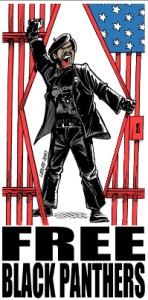
1)Mumia Abu-Jamal
2)Charles Barron
3)H. Rap Brown
4)Stokely Carmichael
5)Eldridge Cleaver
6)Kathleen Neal Cleaver
7)Chaka Khan
8)Nile Rodgers
9)Afeni Shakur
10)Elmer “Geronimo” Pratt
Thank you for your time and taking this brief journey with me, as we Step Into The FUNK, until next time.
Peace,
Steven Daniels
PART 1: https://museumofuncutfunk.com/2014/10/17/48-funkin-years-4-the-black-panther-party/
PART 3: https://museumofuncutfunk.com/2014/11/17/bpp-anniversary-cointelpro-3-of-3/
James Steven Daniels is our newest contributor for the Museum Of UnCut Funk. Stevie, as he is known to family and friends will be sharing his thoughts on music, history, politics and so much more. We are proud and delighted to have our cousin join us at the Museum Of UnCut Funk.


